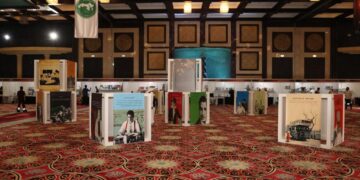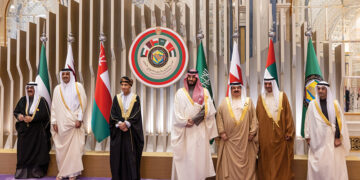The Arab World Institute in Paris is hosting a unique historical and artistic exhibition titled “Saving Treasures of Gaza – 5,000 Years of History,” presenting a comprehensive overview of Gaza’s cultural and archaeological heritage spanning over 5,000 years. Running until November 2, 2025, the exhibition features more than 130 artifacts representing different historical and cultural periods, reflecting the diversity of cultures that have inhabited the Gaza Strip throughout the ages.
The exhibited pieces include stone statues, oil lamps, ceramics, and massive floor mosaics dating back to the Assyrian, Roman, Byzantine, Persian, and Islamic civilizations, highlighting Gaza’s role as a crossroads of cultures, an incubator of science and knowledge, and an important trading center between Asia and Africa.
Among the most prominent pieces on display are a marble statue of the goddess Aphrodite from the Greek era, clay jars used for transporting oil and wine, and intricately decorated Roman oil lamps. The Abu Baraka mosaic, discovered in Beit Lahia, measures approximately 18 square meters and dates back to 179 AD. It represents a prime example of Roman art.
The exhibition also showcases rare pieces recovered from French-Palestinian excavations that began in 1995, along with a private collection of antiquities by Jawdat Khoudary, which is being displayed for the first time in France. The exhibition focuses on archaeological sites damaged during the recent conflict in Gaza in 2023, such as mosques, churches, archives, and the Balakhiya port, known as “Anthedon Harbor,” the first seaport in the region.
In his remarks, Jack Lang, president of the Arab World Institute and former French Minister of Culture, expressed his hope that the exhibition would restore “some hope for the future of Gaza,” emphasizing that “nothing is worse than abandonment and oblivion.” As exhibition curator Elodie Bouvard explained to The Guardian, Gaza has historically been “one of the most open areas in the Mediterranean, a land rich in natural resources, a crossroads of cultures and celebrations, and a permanently inhabited city.” She emphasized that the aim of the exhibition is to revive Gaza’s ancient history and highlight it as a center of cultural interaction across thousands of years.
This exhibition is an opportunity to explore the rich and diverse history of the Gaza Strip, away from the prevailing image associated with conflict, and highlights the profound cultural significance of this part of the world.







